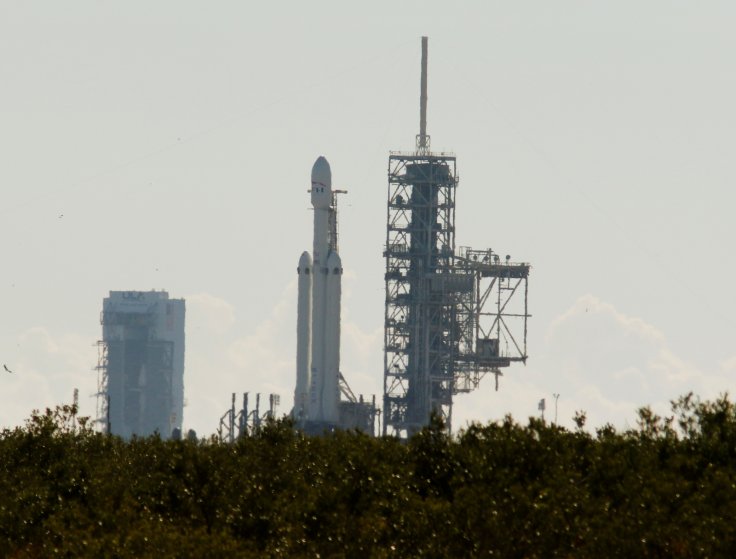
SpaceX's new heavy-lift rocket launcher Falcon Heavy has undergone static firing test at NASA's Kennedy Space Center in Florida on January 24. The rocket ignited all 27 engines of its first stage by 12:30 pm Eastern Standard Time (EST) for around 10 seconds.
The firing test came as a precursor of the maiden flight of the vehicle scheduled for the upcoming weeks. Elon Musk, CEO of SpaceX Company tweeted: "Falcon Heavy hold-down firing this morning was good. Generated quite a thunderhead of steam."
Elon Musk earlier stated that Falcon Heavy's first payload will be a red Tesla Roadster which is to be injected into an orbit around the Sun between earth's and mars' orbit.
Falcon Heavy, regarded as the world's most powerful rocket after NASA's Saturn V, consists of 2 Falcon 9 rockets attached to a third central Falcon 9 rocket core. The additional 2 Falcon 9 rockets are the strap-on-booster for the first stage of the mission.
The rocket has been built to be a re-usable super heavy-lift launch vehicle. It can carry a payload of over 54 metric tons which is equivalent to the capacity of a 737 jetliner aircraft loaded with passengers, crew, luggage, and fuel. Its next closest launcher Delta IV Heavy could carry loads of only half the weight of Falcon Heavy.
The Falcon's initial thrust during the first stage of launch can generate around 5 million pounds from the 27 Merlin engines in its three Falcon nine-engine cores. This is approximately equal to eighteen 747 Jetliners.
Falcon Heavy has been designed to carry humans into space, moon and mars. SpaceX has also developed Dragon spacecraft to host the space travelers during their mission. The Dragon cargo has successfully completed 12 resupply missions to the International Space Station (ISS) from October 2017.
Earlier, SpaceX used CRS-13 Dragon capsule launched on December 15, 2017 from the Cape Canaveral Air Force Station Space Launch Complex 40. It returned supplies from the ISS on January 13, 2018.
Elon Musk has plans to send the first robotic mission to Mars in 2022 followed by the first human mission to the red planet in 2024. Several other government-run space agencies and private aerospace companies have also unveiled plans for manned missions to space, moon, and mars.
US President Donald Trump had signed Space Policy Directive 1 on December 12, 2017, which stated that the US led integrated program will be set for the human return to the moon with support from private sector partners making changes to the earlier national space policy.









